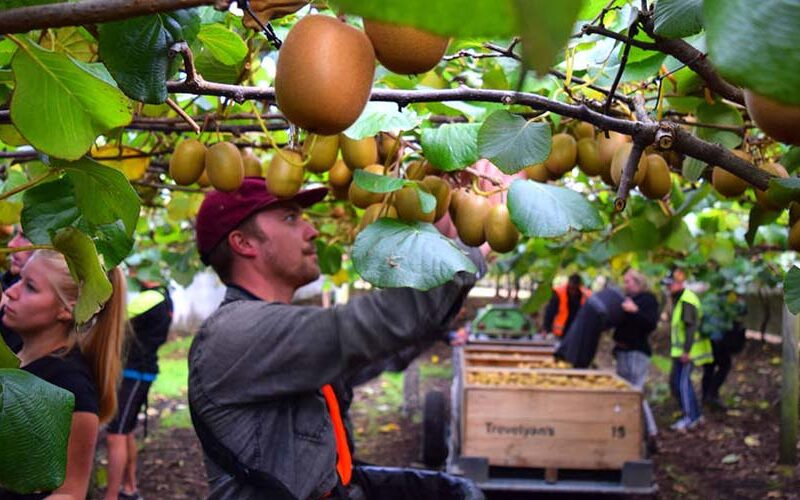The prospect of barely breaking even or running at a loss this season could prove a reality for some Green kiwifruit growers as they grapple with soaring labour costs.
NZ Kiwifruit Growers Incorporated (NZKGI) chair Mark Mayston said labour costs are the biggest component of growers’ bills, and one that has soared by as much as 20% in the past year.
“As an industry, last year we moved to accept the living wage as a minimum payment, that was a positive thing to do, but that rate is well in the rear view now,” Mayston said.
The industry was the first in the primary sector to lay down the living wage rate of $23.65 an hour to workers as a minimum, but rates have moved significantly above that for most.
Data from NZKGI shows rates for Green pickers this season averaged $28.14 an hour, up from $23.39 an hour last year. In the packhouses a skilled worker will be paid $25.14 an hour, up from $23.42 last year.
Over the past three years the sector has averaged an increase of 8% a year in the labour costs for pickers’ wages, and Mayston predicts rates charged through contractors are starting to hit unsustainable highs.
“It is starting to get to the point it feels a bit like extortion,” he said.
Industry sources confirm labour costs are close to 75% of most orchardists’ operating costs now, with fertiliser and sprays well back, at about 15%.
On average, Green orchardists are now working on average costs per hectare of $53,000 and SunGold growers at about $60,000.
This year the average return before orchard costs was $75,000 a hectare for Green and $176,000 for SunGold. But Zespri’s 2021 five-year outlook reveals 11% of the industry’s Green crop comes from growers only averaging 5600 trays a hectare. Based on this season’s payment of $6.35 a tray, these marginal operators will face a negative return well into the tens of thousands of dollars.
One large operator noted that even for an average Green orchardist, the $53,000 a hectare costs meant “it was not a particularly exciting investment at the moment.” He also noted that while much is made of the value of SunGold fruit, the per tray payment of $11.50 had not shifted significantly in the past four years. That was despite the surge in labour costs over the same period, and major increases in SunGold licence costs now at $800,000 a hectare.
Mayston said it was unfortunate the industry is judged on returns often only being received by the best SunGold growers.
“And we know even then there is a wide range between good to lighter crops. Throw in Green growers and there is a different denominator getting pulled into that labour-wage rate war,” he said.
He said pressure on wages has been exacerbated by demand shared between apples and kiwifruit fighting for the same labour resource.
NZKGI chief executive Colin Bond said Zespri’s record-setting profit announcement of $361 million this year was admirable, but only represented a gross revenue return to growers.
“With orchard costs of $55,000 a hectare, for the lowest quartile of Green growers it makes it pretty challenging,” Bond said.
He said this winter’s pruning rates had yet to be set, but last year growers had faced costs moving from about $7000 a hectare to $10,000 a hectare for the skilled job.
Some growers have expressed concern the high-value of SunGold has pushed up labour expectation on wage rates, with the significantly lower value Green crops also having to support those high pay rates, despite being almost half SunGold’s market value.
But Mayston said even for SunGold growers who may have borrowed on the value of at least half their SunGold licence, interest rates were eroding the outwardly healthy average orchard gate return of $176,000 a hectare.
“Fifteen months ago you would have seen interest rates of 3%, now we are looking at 6.7-6.8%,” Mayston said.
Lending by the banking sector to horticulture has grown 30% over the last two years to $6.8 billion this April, much of this to the kiwifruit sector for SunGold licences. This has come as overall primary sector lending has declined.
He said the labour cost problem is partially due to the industry’s greater reliance upon outside contractors completing orchard jobs.
Most contracted labour was costing at least $30 an hour.
“It may be the time has come for growers to look at how they could employ staff full-time themselves, maybe sharing a worker between them if they are smaller orchards,” he said.
Read more articles in the Food Security special report series here.






